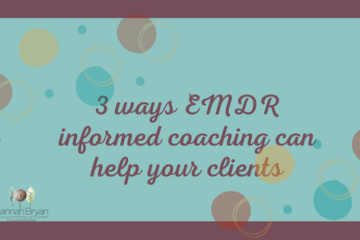I trained in EMDR back in 2005. I really can’t remember there being much covered about case conceptualisation in EMDR. It’s something that I now have constantly in the back of my head when I am working with my clients. Like my approach to a lot of things, I really do try to keep things simple. So if you want to find out more about how develop helpful case conceptualisations, please do read on.
I think case conceptualisation in EMDR is one of the key pillars that hold EMDR as a therapy together. The most simplest way I find to contain the information is to use the 3 pronged approach. I simply split a page in 3 and have 3 columns, PAST, PRESENT and FUTURE.
1. Don’t start with the past prong.
It’s so tempting to do this. This is often the most interesting bit. This for me is the whole reason I trained as a Clinical Psychologist. And trained in EMDR therapy. I am always asking the question What has happened to you? Because I really do believe that this is at the heart of the problems that most of our clients have in the here and now. But sometimes we can do this too early. Before we even have an understanding of what is troubling our clients in the here and now.
I develop my case conceptualisations with my clients after I have already taken a full history. I always do a time line in my Phase 1 History taking. But all of that information does not just by default end up on my past prong on my case conceptualisation.
This would be too overwhelming. It’s often too overwhelming to initially put the spot light on the past. It often makes us as therapists just want to work with everything.
2. Look for the links, find the connections.
The past in EMDR therapy is important in terms of the way it impacts on our current functioning. So when I am developing a case conceptualisation in EMDR, I want to understand how the things in the clients past are impacting on their functioning now. It needs to link together. For our clients to be able to be functioning at their best this is the best way to do it.
I will focus on the presenting problem or the future goals first before I fill in the past prong.
For example a client may come with a driving anxiety that has lead to them not leaving the house. There hopes for treatment are to be able to get back in their car. They want to drive without feeling overwhelmed with anxiety. There may well have been bullying in childhood or a traumatic death at some point years ago. I will of course hold these traumas in my mind. But I won’t necessarily put them on the case conceptualisation and the treatment plan. Because they are not directly linked to the driving anxiety. They probably don’t affect the clients wish to be able to drive with more confidence.
3. Remind yourself we don’t have to be fixing everything
When I started off in this therapy world, I think I had a belief that I could cure everybody. That we could work through every single difficulty a person has ever had. Just a few years of working in the NHS made me realise that you simply can’t do this. IT’S TOO MUCH. I don’t think it’s helpful. IT OVERWHELMS people.
So instead we need to really focus in. We can look at what the problem is. What our clients what to be different about this problem and their life. Then we can look at what are THE KEY things in their past experiences that have led to the problem in the first place.
Want to dive deeper into recharging your EMDR practice then find out more about my webinar series click here.

- Hi, my name is Dr Hannah Bryan. I am a Chartered Clinical Psychologist and a Europe Approved EMDR Consultant and Facilitator. I have used EMDR in my Clinical practice since 2006. I have been an EMDR Consultant since 2014 and an EMDR Facilitator since 2019.
- I offer supervision packages.
- I am extremely passionate about helping clinicians improve their knowledge and skills in EMDR. I want you to improve your confidence and practice it more with your clients.
- I run a webinar series Recharge your EMDR practice you can find out more here



0 Comments